<< Previous | Displaying results 3401-3450 of 6769 for "" | Next >>
A variety of non-Jewish groups and individuals resisted the Nazi regime, both in Germany and in German-occupied territory. Learn more.
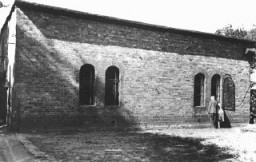
Roma (Gypsies) were persecuted in Europe before and during World War II. This history is well documented in archives throughout Europe and the United States. Learn more.
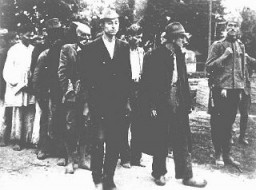
The Nazi regime's extensive camp system included concentration camps, forced-labor camps, prisoner-of-war camps, transit camps, and killing centers.
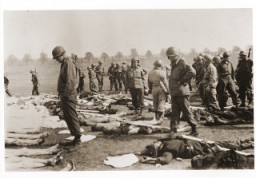
Learn about Fürstengrube subcamp of Auschwitz, including its establishment, administration, prisoner population, and forced labor and conditions in the camp.
Learn about the establishment and history of the Dachau subcamp München-Schwabing, and the role of Eleonore Baur (also known as Schwester Pia or Sister Pia).
Learn more about Bremen-Farge, a subcamp of Neuengamme where the majority of prisoners were used to construct an underground U-boat shipyard for the German navy.
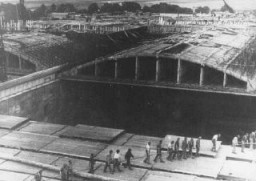
Protestant pastor Martin Niemöller emerged as an opponent of Adolf Hitler and was imprisoned in camps for 7 years. Learn about the complexities surrounding his beliefs.
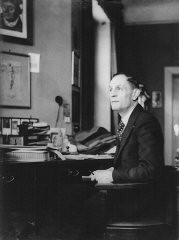
Key dates in the history of the SS (Schutzstaffel; Protection Squadrons), charged with the leadership of the “Final Solution,” the murder of European Jews.
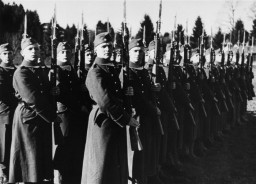
Explore a timeline of key events in the history of the Trawniki in German-occupied Poland.
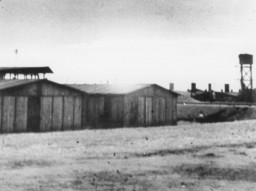
Key dates in the life of Reinhard Heydrich, chief of the Reich Security Main Office, the SS and police agency most directly concerned with implementing Final Solution.
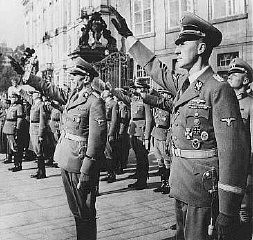
Heinrich Himmler was the leader of the dreaded SS of the Nazi Party from 1929 until 1945. Learn more about key dates in the life of Heinrich Himmler.
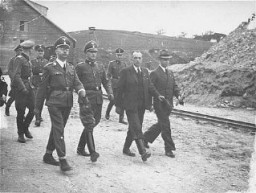
From July 1941-May 1944, the SS camp at Trawniki had several purposes. It is best known as the training site for auxiliary police guards used in Nazi killing centers. Learn more.

In 1933-1934, the SS seized control of the Nazi camp system. Learn more about the persecution, forced labor, and murder that occurred under SS camp rule.

The SS (Schutzstaffel) was the elite guard of the Nazi regime and a virtual state within the Third Reich.
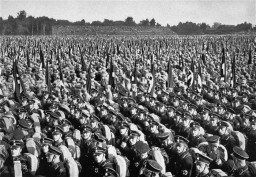
The SS was the elite guard of the Nazi regime and became a virtual state within a state in Nazi Germany. Learn about its role in carrying out Nazi policies.
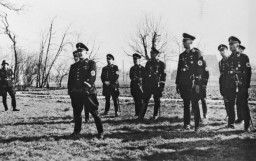
Learn more about the SS and the organization’s involvement in perpetrating the Holocaust.
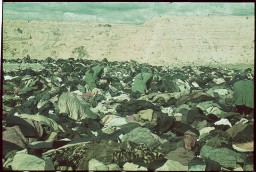
In 1945, the power and influence of the SS in Nazi Germany started to decline. Learn more about the subsequent disintegration and postwar trials.
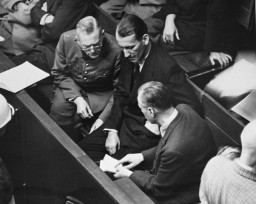
The Waffen-SS was the military branch of the SS in Nazi Germany. During World War II, they took part in most military campaigns.
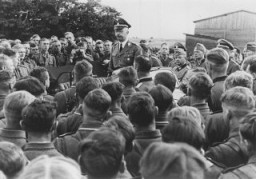
Reinhard Heydrich, Reich Security Main Office chief, was one of the main architects of the “Final Solution," the Nazi plan to murder the Jews of Europe.
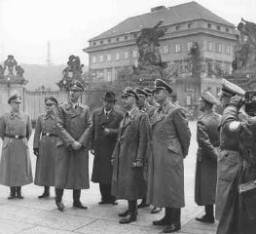
SS Chief Heinrich Himmler was chief architect of the "Final Solution." Learn more about Himmler, one of the most powerful men after Hitler in Nazi Germany.

Leni Riefenstahl was a German dancer, actress, and film director best known for her imposing propaganda films in support of the National Socialist (Nazi) Party.
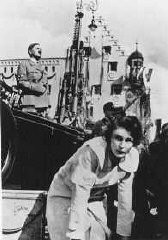
Charged with managing the mass deportation of Jews to ghettos and killing centers, Adolf Eichmann was a key figure in the "Final Solution."
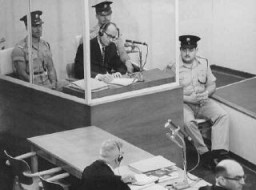
Adolf Eichmann was a key figure in implementing the “Final Solution,” the Nazi plan to kill Europe's Jews. Learn more through key dates and events.
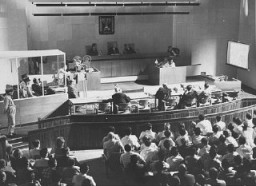
The “Final Solution” was perpetrated by the SS along with other Nazi institutions and professionals. Learn more about key perpetrators of the Holocaust.
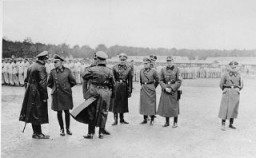
After the devastation of WWI, the victorious western powers imposed a series of treaties upon the defeated nations. Learn about the treaties and their impact.
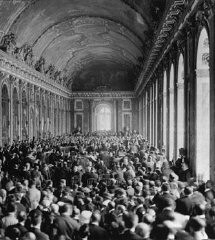
The trauma of WWI would profoundly shape the attitudes and actions of leaders and ordinary people during the Holocaust. Learn more about the aftermath of the conflict.
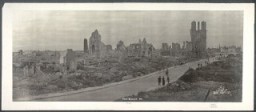
Under Adolf Hitler, the Nazi regime would be responsible for the murder of 6 million Jews and millions of other victims. Learn about Hitler's early years.
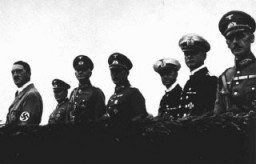
Learn about Adolf Hitler's experiences during World War I and his ideological development after the war.
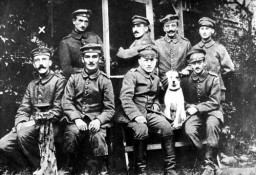
Karl Höcker created a personal album of photographs chronicling SS officers’ activities at Auschwitz. Learn about this chilling collection.
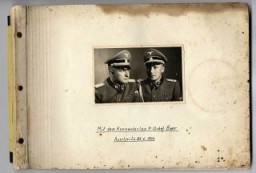
Learn about photographs contained in Karl Höcker’s album depicting official visits, ceremonies, and the social activities of the Auschwitz camp staff.
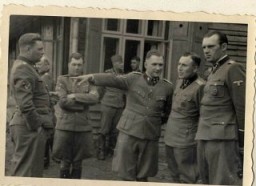
Karl Höcker’s album shows SS officers at events ranging from ceremonies to social gatherings, in stark contrast to other photographs from Auschwitz. Learn more.
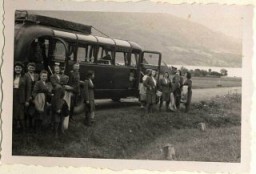
Karl Höcker’s album shows him in close contact to the main perpetrators at Auschwitz-Birkenau. Learn about his 1963 trial and the significance of his album.
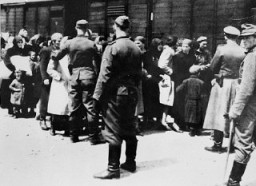
Ghettos separating Jews from the rest of the population were part of the Nazi plan to destroy Europe's Jews. Learn about three types of ghettos: closed, open, and destruction.
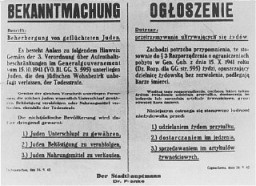
The 1936 Olympics were the first to employ the torch relay. Learn more about this new ritual, Nazi propaganda, and the Olympic Games in Berlin, Germany.

Iranian diplomat Abdol Hossein Sardari gave critical assistance to Iranian Jews in occupied France (1940-1944) to protect them from Nazi persecution.
The swastika is an ancient symbol that was in use in many different cultures for many years before Adolf Hitler made it the centerpiece of the Nazi flag.
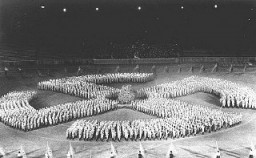
The Commissar Order was issued by the German Armed Forces High Command on June 6, 1941. It ordered soldiers to shoot Soviet Communist Party officials taken prisoner.
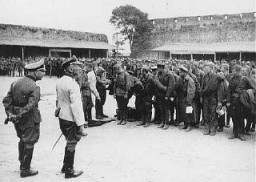
German Jews trying to immigrate to the US in the late 1930s met extreme bureaucratic hurdles, including documentation that was often virtually impossible to obtain.
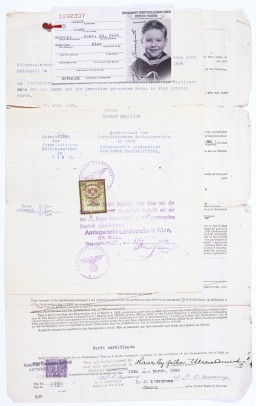
The Nazis carried out genocide against Europe’s Jews and persecuted and murdered other groups based on racial theories. Learn about the history of these murderous ideas.
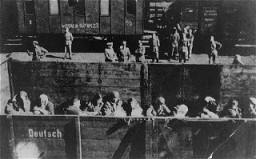
Explore a timeline of key events during the history of the Krakow ghetto in German-occupied Poland.
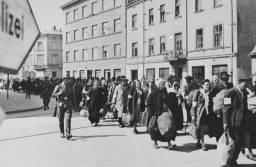
Explore key dates in the history of the Theresienstadt camp/ghetto, which served multiple purposes during its existence from 1941-45.

Despite terrible living conditions and the constant threat of deportation, there was a highly developed cultural life in the Theresienstadt camp-ghetto. Learn more.
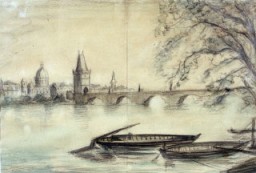
Learn more about the unique SS and police structure of the Theresienstadt “camp-ghetto” during World War II.
Learn more about the Danish Red Cross visit to Theresienstadt and the Nazi attempt to clean and hide the true conditions of the camp.
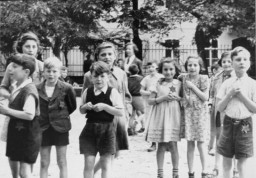
Learn more about Theresienstadt’s function as a transit camp and the deportation of Czech Jews during World War II.

The "Nacht und Nebel" decree allowed German authorities to capture without trace ("by night and fog") and try individuals alleged to be "endangering German security."
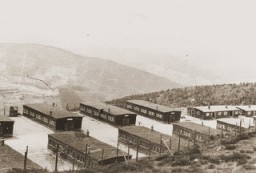
In 1942, German authorities began to deport German and Austrian Jews to Theresienstadt. Learn about the administration of the camp-ghetto and Jews’ experiences.
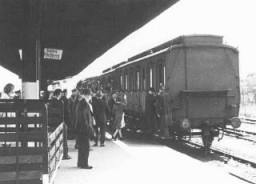
Learn about the “Tehran Children,” a group of Polish-Jewish refugees. In 1942, they were resettled from the Soviet Union to Palestine via Iran.
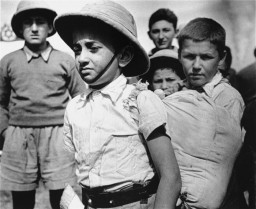
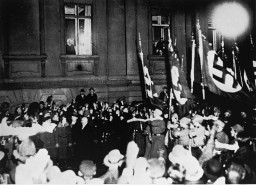
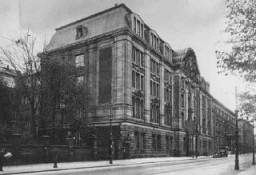
We would like to thank Crown Family Philanthropies, Abe and Ida Cooper Foundation, the Claims Conference, EVZ, and BMF for supporting the ongoing work to create content and resources for the Holocaust Encyclopedia. View the list of donor acknowledgement.